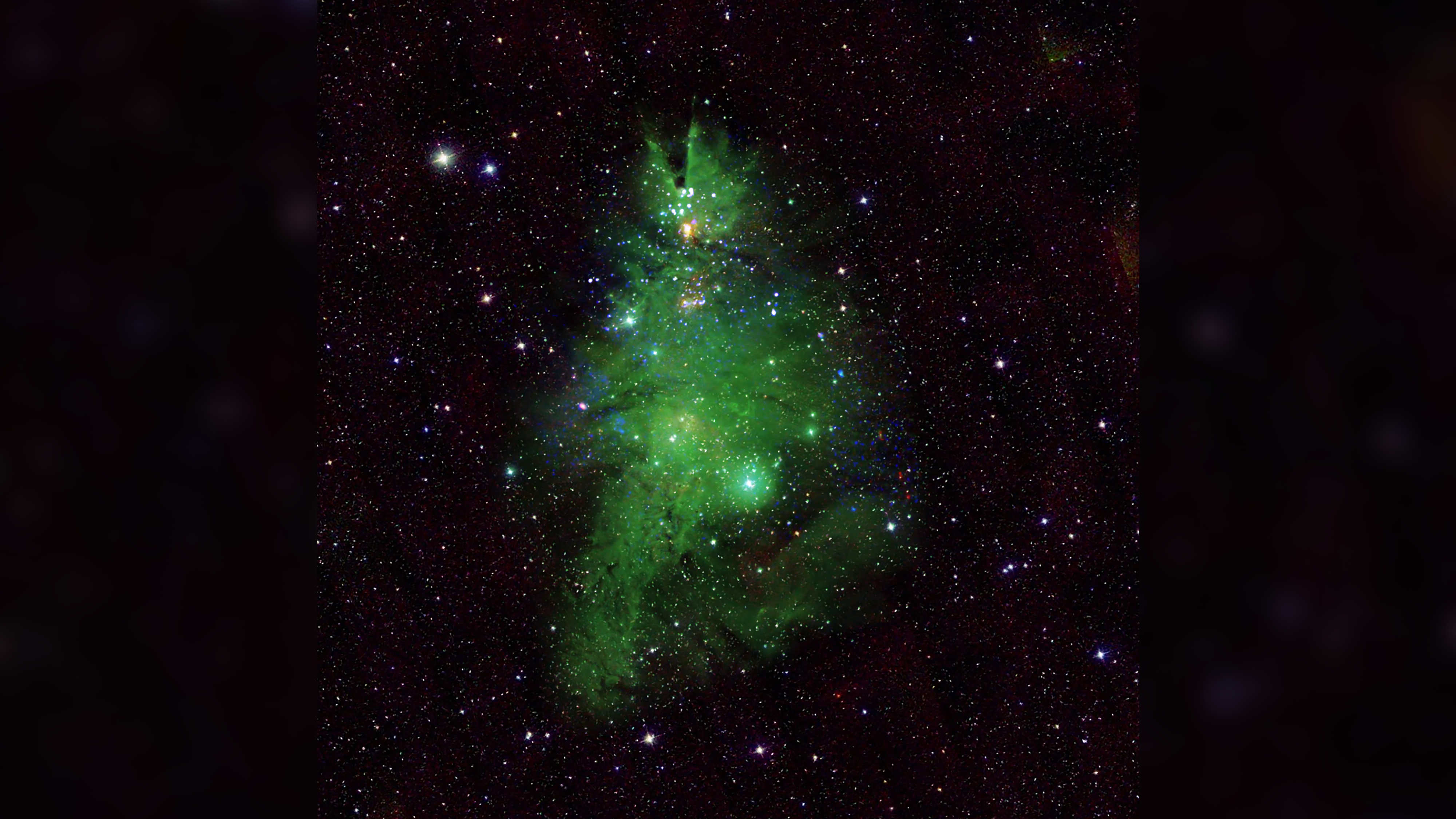Space photo of the week: Shimmering 'Christmas Tree Cluster' wishes happy holidays to the universe
NASA's Chandra X-ray Observatory helped to build a particularly festive image of the gas, dust, and young stars of NGC 2264, also known as the "Christmas Tree Cluster."

What it is: The young star cluster NGC 2264, the so-called "Christmas Tree Cluster."
When it was taken: Between February 2002 and December 2011, via eight observations spanning 137 hours.
Where it is: 2,500 light-years away, within the Milky Way.
Why it's so special: NGC 2264 is a cluster of stars with ages between 1 million and 5 million years — making them very young in comparison to our middle-aged sun, which is around 4.6 billion years old. NGC 2264 has been nicknamed "the Christmas Tree Cluster" thanks to its resemblance to an evergreen conifer.
The stars of NGC 2264 come in a range of sizes, with some measuring seven times larger than the sun and others only 10% the mass of our star. The young stars in this image are the sparkling blue lights shining through the cluster's green clouds of gas.
The Christmas Tree Nebula image is a "composite" of data from different telescopes, and is an example of what can be created when astronomers unite observations in different wavelengths of light across the electromagnetic spectrum.
The young blue stars are particularly prominent in high-energy X-ray radiation. So, to capture these cosmic fairy lights, astronomers used data collected by NASA's Chandra X-ray Observatory, a space telescope specially designed to detect X-ray emissions from very hot regions of the universe without interference from Earth's atmosphere.
Sign up for the Live Science daily newsletter now
Get the world’s most fascinating discoveries delivered straight to your inbox.
The glowing green gas of the Christmas Tree Nebula that forms its pine tree-like shape was captured in optical light, the wavelength range that our eyes have evolved to see, by the Wisconsin-Indiana-Yale-NOIRLab (WIYN) 0.9-meter telescope at Kitt Peak National Observatory in Arizona.Finally, the blanket of white stars both in front of the Christmas Tree Nebula and behind it was captured in infrared data by the Two Micron All Sky Survey (2MASS).
After this data was compiled to build this composite image, the Christmas Tree Cluster was rotated about 150 degrees to put its peak at the top of the image.
The cosmic Yule tree is arguably more familiar because, like many of the Christmas Trees that decorate our homes this year, someone forgot to decorate a spot. For NGC 2264, that spot takes the form of a dark void at the bottom right of its Christmas tree-like shape, which someone should definitely hide by rotating it towards the corner.
Robert Lea is a science journalist in the U.K. who specializes in science, space, physics, astronomy, astrophysics, cosmology, quantum mechanics and technology. Rob's articles have been published in Physics World, New Scientist, Astronomy Magazine, All About Space and ZME Science. He also writes about science communication for Elsevier and the European Journal of Physics. Rob holds a bachelor of science degree in physics and astronomy from the U.K.’s Open University










